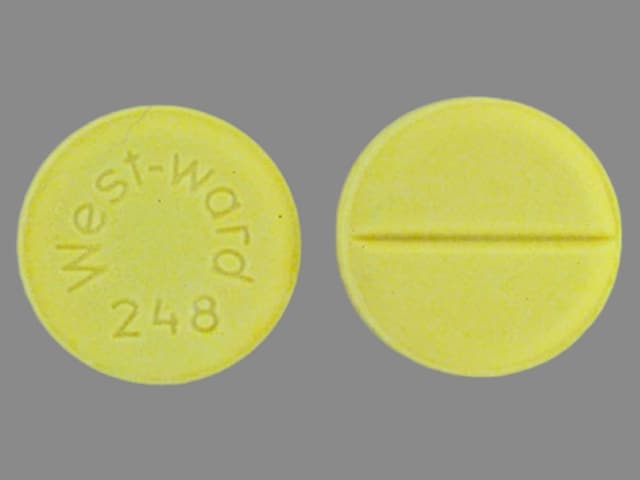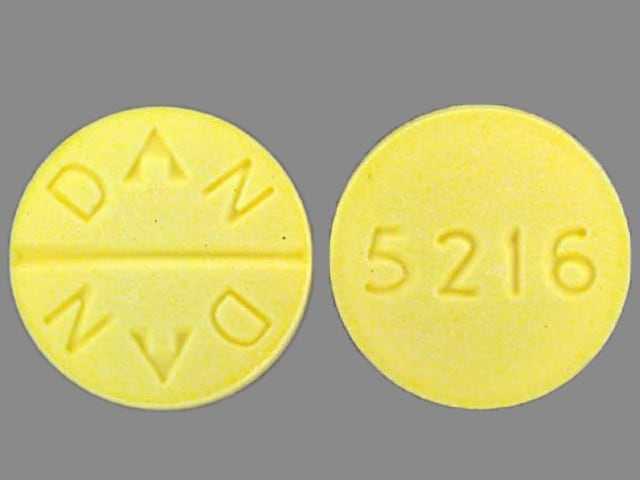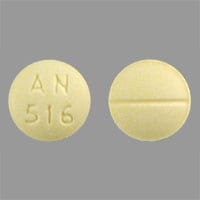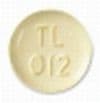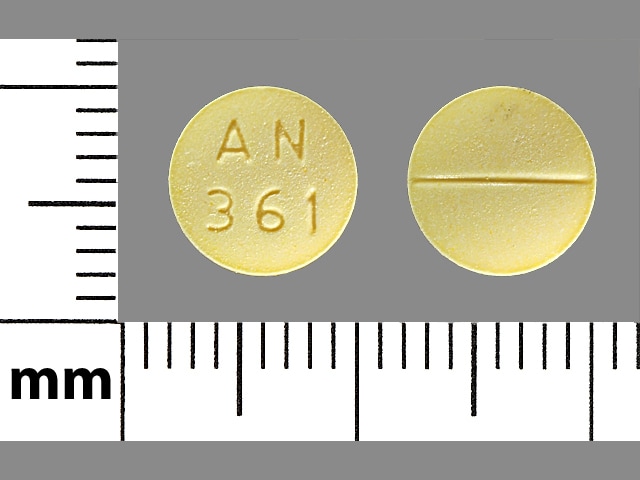Dosage Forms
Excipient information presented when available (limited, particularly for generics); consult specific product labeling.
Capsule, Oral [preservative free]:
FA-8: 0.8 mg [dye free, sugar free, yeast free]
Generic: 5 mg, 20 mg
Solution, Injection, as sodium folate:
Generic: 5 mg/mL (10 mL)
Tablet, Oral:
Generic: 400 mcg, 800 mcg, 1 mg
Tablet, Oral [preservative free]:
FA-8: 800 mcg [dye free]
Generic: 400 mcg, 800 mcg
Pharmacology
Mechanism of Action
Folic acid is necessary for formation of a number of coenzymes in many metabolic systems, particularly for purine and pyrimidine synthesis; required for nucleoprotein synthesis and maintenance in erythropoiesis; stimulates WBC and platelet production in folate deficiency anemia.
In the treatment of methanol intoxication, folic acid enhances the metabolism of formic acid, the toxic metabolite of methanol, to nontoxic metabolites (Barceloux 2002).
Pharmacokinetics/Pharmacodynamics
Absorption
Proximal part of small intestine
Metabolism
Hepatic
Excretion
Urine
Time to Peak
Oral: 1 hour
Use: Labeled Indications
Megaloblastic and macrocytic anemias due to folate deficiency: Treatment of megaloblastic and macrocytic anemias due to folate deficiency
Use: Off Label
Adjunctive cofactory therapy in methanol toxicity (alternative to leucovorin calcium)yes
The American Academy of Clinical Toxicology (AACT) guidelines recognize the lack of human data for the use of folic acid derivatives in the treatment of methanol toxicity and advise, without an evidence-based recommendation, that the administration of leucovorin (or folic acid as a suitable alternative) should be considered in patients with suspected or confirmed methanol poisoning Barceloux 2002.
Neural tube defectsyes
National guidelines recommend the use of oral folic acid before conception and during early pregnancy to reduce the risk of NTDs ACOG 2017, USPSTF 2017.
Supplementation to reduce toxicity associated with antifolate chemotherapya
Data from 2 phase III studies and a phase II study support the use of folic acid supplementation (with intramuscular cyanocobalamin supplementation) in patients receiving the antimetabolite (antifolate) chemotherapeutic agents pemetrexed and pralatrexate O’Connor 2011, Scagliotti 2008, Vogelzang 2003.
Contraindications
Hypersensitivity to folic acid or any component of the formulation
Dosage and Administration
Dosing: Adult
Megaloblastic and macrocytic anemias due to folate deficiency:
Oral: 1 to 5 mg once daily (Cook 2014); doses up to 15 mg once daily have also been recommended (Hoffbrand 2015).
Manufacturer's labeling: Dosing in the prescribing information may not reflect current clinical practice. Oral, IM, IV, SubQ: Initial: 0.4 to 1 mg/day.
Maintenance dose: 0.4 mg/day
Pregnant and lactating women: Maintenance dose: 0.8 mg/day
Methanol poisoning (off-label use): Therapy should continue until methanol and formic acid have been completely eliminated (Zakharov 2015). Cofactors are adjunctive to antidotal therapy and should never be used alone.
IV: 50 to 70 mg every 4 hours (Osterloh 1986)
Oral: 50 mg every 3 to 4 hours (Zakharov 2015)
Prevention of neural tube defects (off-label use): Oral:
Females of childbearing potential: 0.4 mg/day (ACOG 187 2017) or 0.4 to 0.8 mg/day (USPSTF 2017). Supplementation should start ≥1 month prior to pregnancy and continue through 12 weeks gestation (ACOG 187 2017).
Females at high risk, who have had a previous pregnancy with a neural tube defect, or with family history of neural tube defects: 4 mg/day. Supplementation should start ≥3 months prior to pregnancy and continue through 12 weeks gestation (ACOG 187 2017)
Supplementation to reduce toxicity associated with antifolate chemotherapy (off-label use): Oral:
To reduce toxicity associated with pemetrexed: Administer folic acid 0.35 to 1 mg once daily, beginning 1 to 3 weeks prior to pemetrexed treatment initiation; continue for 3 weeks after the last pemetrexed dose; administer with intramuscular cyanocobalamin supplementation (Scagliotti 2008, Vogelzang 2003).
To reduce toxicity associated with pralatrexate: Administer folic acid 1 to 1.25 mg once daily (O’Connor 2011), beginning 10 days prior to pralatrexate treatment initiation; continue for 30 days after the last pralatrexate dose; administer with intramuscular cyanocobalamin supplementation.
Dosing: Geriatric
Refer to adult dosing. Vitamin B12 deficiency must be ruled out before initiating folate therapy due to frequency of combined nutritional deficiencies.
Dosing: Pediatric
Anemia (folic acid deficiency); treatment: Oral, IM, IV, SubQ:
Initial: Infants, Children, and Adolescents: 0.5 to 1 mg daily for 3 to 4 weeks until definite hematologic response (Kliegman 2020).
Maintenance: Note:A multivitamin containing 0.2 mg folic acid may be adequate for maintenance(Kliegman 2020).
Infants: 0.1 mg/day.
Children <4 years: 0.1 to 0.3 mg/day.
Children ≥4 years and Adolescents: 0.1 to 0.4 mg/day.
Parenteral nutrition, maintenance requirement of folic acid (ASPEN [Vanek 2012]; ESPGHAN/ESPEN/ESPR/CSPEN [Bronsky 2018]): IV:
Infants: 56 mcg/kg/day.
Children and Adolescents: 140 mcg/day.
Gingival hyperplasia due to phenytoin, prevention: Limited data available: Oral: Children ≥6 years and Adolescents: 0.5 mg/day; dosing based on results from a double-blind, randomized, placebo-controlled trial of 120 pediatric patients (treatment arm, n=62; age range: 6 to 15 years) who were started on phenytoin therapy; folate treatment resulted in lower rate of hyperplasia (treatment arm: 21% vs placebo: 88%); severity was also lower in treated patients compared to placebo (Arya 2011).
Extemporaneously Prepared
1 mg/mL Oral Solution
A 1 mg/mL folic acid oral solution may be made with tablets. Heat 90 mL of purified water almost to boiling. Dissolve parabens (methylparaben 200 mg and propylparaben 20 mg) in the heated water; cool to room temperature. Crush one-hundred 1 mg tablets, then dissolve folic acid in the solution. Adjust pH to 8-8.5 with sodium hydroxide 10%; add sufficient quantity of purified water to make 100 mL; mix well. Stable for 30 days at room temperature (Allen 2007).
Allen LV Jr, "Folic Acid 1-mg/mL Oral Liquid," Int J Pharm Compound, 2007, 11(3):244.
0.05 mg/mL Oral Solution
A 0.05 mg/mL folic acid oral solution may be prepared using the injectable formulation (5 mg/mL). Mix 1 mL of injectable folic acid with 90 mL of purified water. Adjust pH to 8-8.5 with sodium hydroxide 10%; add sufficient quantity of purified water to make 100 mL; mix well. Stable for 30 days at room temperature (Nahata 2004).
Nahata MC, Pai VB, and Hipple TF, Pediatric Drug Formulations, 5th ed, Cincinnati, OH: Harvey Whitney Books Co, 2004.
Administration
Oral preferred, but may also be administered by deep IM, SubQ, or IV injection.
IV administration: May administer ≤5 mg dose undiluted over ≥1 minute or may dilute ≤5 mg in 50 mL of NS or D5W and infuse over 30 minutes. May also be added to IV maintenance solutions and given as an infusion.
Dietary Considerations
As of January 1998, the FDA has required manufacturers of enriched flour, bread, corn meal, pasta, rice, and other grain products to add folic acid to their products. The intent is to help decrease the risk of neural tube defects by increasing folic acid intake. Other foods which contain folic acid include dark green leafy vegetables, citrus fruits and juices, and lentils.
Dietary adequate intake (AI) (IOM 1998): Expressed as folate equivalents:
1 to 6 months: 65 mcg/day
7 to 12 months: 80 mcg/day
Dietary recommended daily allowance (RDA) (IOM 1998): Expressed as dietary folate equivalents:
1 to 3 years: 150 mcg/day
4 to 8 years: 200 mcg/day
9 to 13 years: 300 mcg/day
>13 years: 400 mcg/day
Pregnancy: 600 mcg/day
Lactation: 500 mcg/day
Storage
Store at 20°C to 25°C (68°F to 77°F); protect from light.
Folic Acid Images
Drug Interactions
Fluorouracil Products: Folic Acid may enhance the adverse/toxic effect of Fluorouracil Products. Monitor therapy
Fosphenytoin: Folic Acid may decrease the serum concentration of Fosphenytoin. Monitor therapy
Green Tea: May decrease the serum concentration of Folic Acid. Monitor therapy
PHENobarbital: Folic Acid may decrease the serum concentration of PHENobarbital. Monitor therapy
Phenytoin: Folic Acid may decrease the serum concentration of Phenytoin. Monitor therapy
Primidone: Folic Acid may decrease the serum concentration of Primidone. Additionally, folic acid may decrease concentrations of active metabolites of primidone (e.g., phenobarbital). Monitor therapy
Pyrimethamine: Folic Acid may diminish the therapeutic effect of Pyrimethamine. Management: Folic acid doses greater than 2.5 mg per day should be avoided due to the potential for sulfadoxine/pyrimethamine treatment failure. Consider limiting folic acid use to no more than 0.4 mg per day for women of child-bearing age. Consider therapy modification
Raltitrexed: Folic Acid may diminish the therapeutic effect of Raltitrexed. Avoid combination
Sulfadoxine: Folic Acid may diminish the therapeutic effect of Sulfadoxine. Management: Folic acid doses greater than 2.5 mg per day should be avoided due to the potential for sulfadoxine/pyrimethamine treatment failure. Consider limiting folic acid use to no more than 0.4 mg per day for women of child-bearing age. Consider therapy modification
SulfaSALAzine: May decrease the serum concentration of Folic Acid. Monitor therapy
Test Interactions
Falsely low serum concentrations may occur with the Lactobacillus casei assay method in patients on anti-infectives (eg, tetracycline)
Adverse Reactions
Frequency not defined.
Cardiovascular: Flushing (slight)
Central nervous system: Malaise (general)
Dermatologic: Erythema, pruritus, skin rash
Hypersensitivity: Hypersensitivity reaction
Respiratory: Bronchospasm
Warnings/Precautions
Disease-related concerns:
- Anemia: Monotherapy: Not appropriate for monotherapy with pernicious, aplastic, or normocytic anemias when anemia is present with vitamin B12 deficiency.
- Pernicious anemia: Doses >0.1 mg/day may obscure pernicious anemia with continuing irreversible nerve damage progression.
Concurrent drug therapy issues:
- Drug-drug interactions: Potentially significant interactions may exist, requiring dose or frequency adjustment, additional monitoring, and/or selection of alternative therapy. Consult drug interactions database for more detailed information.
Dosage form specific issues:
- Aluminum: The parenteral product may contain aluminum; toxic aluminum concentrations may be seen with high doses, prolonged use, or renal dysfunction. Premature neonates are at higher risk due to immature renal function and aluminum intake from other parenteral sources. Parenteral aluminum exposure of >4 to 5 mcg/kg/day is associated with CNS and bone toxicity; tissue loading may occur at lower doses (Federal Register 2002). See manufacturer’s labeling.
- Benzyl alcohol and derivatives: Some dosage forms may contain benzyl alcohol; large amounts of benzyl alcohol (≥99 mg/kg/day) have been associated with a potentially fatal toxicity (“gasping syndrome”) in neonates; the “gasping syndrome” consists of metabolic acidosis, respiratory distress, gasping respirations, CNS dysfunction (including convulsions, intracranial hemorrhage), hypotension and cardiovascular collapse (AAP ["Inactive" 1997], CDC 1982); some data suggests that benzoate displaces bilirubin from protein binding sites (Ahlfors 2001); avoid or use dosage forms containing benzyl alcohol with caution in neonates. See manufacturer’s labeling.
Other warnings/precautions:
- Resistance to treatment: May occur with depressed hematopoiesis, alcoholism, and deficiencies of other vitamins.
Pregnancy
Pregnancy Considerations
Water soluble vitamins cross the placenta (IOM 1998).
Folate requirements increase during pregnancy (IOM 1998). Folate supplementation during the periconceptual period decreases the risk of neural tube defects. All females planning a pregnancy or who may potentially become pregnant should begin folic acid supplementation prior to conception. Higher doses are required in females at high risk of neural tube defects (ACOG 187 2017; USPSTF 2017). Folic acid is also indicated for the treatment of anemias due to folate deficiency in pregnant women.
Patient Education
What is this drug used for?
- It is used to help with some kinds of anemia.
- This vitamin is used to aid the diet needs before, during, and after pregnancy.
- It may be given to you for other reasons. Talk with the doctor.
- Signs of a significant reaction like wheezing; chest tightness; fever; itching; bad cough; blue skin color; seizures; or swelling of face, lips, tongue, or throat.
Note: This is not a comprehensive list of all side effects. Talk to your doctor if you have questions.
Consumer Information Use and Disclaimer: This information should not be used to decide whether or not to take this medicine or any other medicine. Only the healthcare provider has the knowledge and training to decide which medicines are right for a specific patient. This information does not endorse any medicine as safe, effective, or approved for treating any patient or health condition. This is only a brief summary of general information about this medicine. It does NOT include all information about the possible uses, directions, warnings, precautions, interactions, adverse effects, or risks that may apply to this medicine. This information is not specific medical advice and does not replace information you receive from the healthcare provider. You must talk with the healthcare provider for complete information about the risks and benefits of using this medicine.
